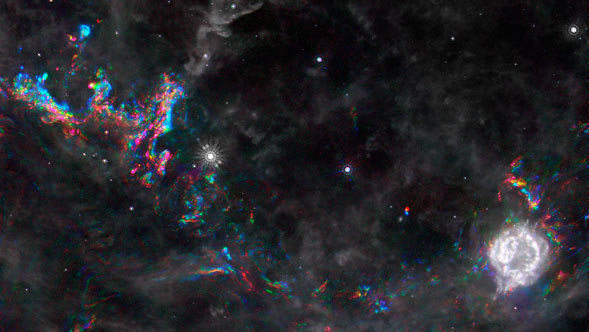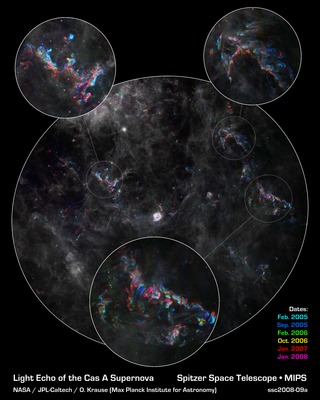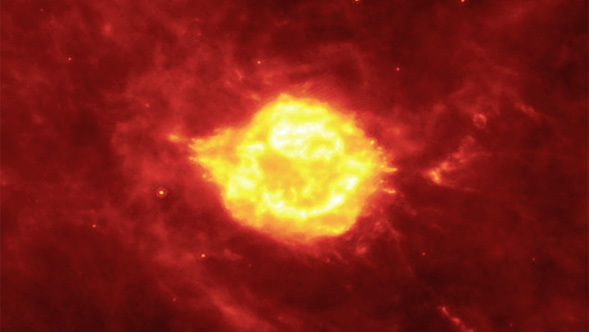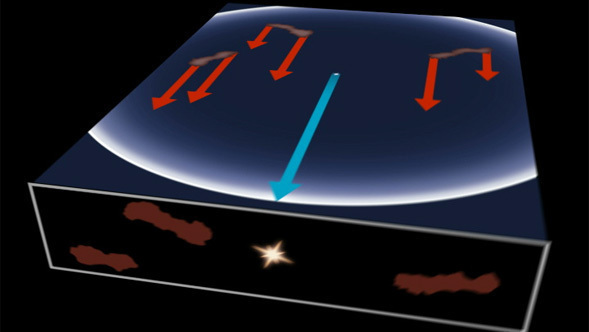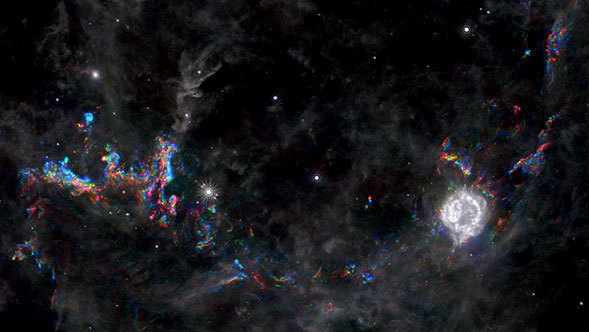Cauldron of Light
Science Animations Video • May 5th, 2008 • ssc2008-09v1
In this animation, a seething cauldron of light appears to bubble and ooze around the remains of a giant star that astronomers have been watching tear itself apart for the last 300 years. This movie flips quickly between different observations taken over three years by NASA's Spitzer Space Telescope.
Beginning in the center, the well-studied Cassiopeia A supernova remnant is shown. Cassiopeia A is the remnant of a once massive star that died in a violent supernova explosion. It consists of a dead star, called a neutron star, and a surrounding shell of material that was blasted off as the star died.
Panning outward, "light echoes" create the illusion of motion in the clouds, as different areas of the material are lit up in succession by the light flash of the supernova. A light echo occurs when a star explodes, acting like a cosmic flashbulb. The light from this explosion zips through nearby dust clumps, illuminating and heating them up slightly. This brief period of warming causes them to glow in infrared, like a chain of Christmas bulbs lighting up one by one. The result is an optical illusion, in which the dust appears to be flying outward at the speed of light.
In reality, the clouds are stationary, at least in the brief time over which these observations were taken. The inclination of the clouds cause some light echoes to appear to expand away from the supernova remnant, while others move towards it or boil in many directions with seeming turbulence.
Video Credit: NASA/JPL-Caltech/MPIA
